- Home
- Alistair Moffat
The Secret History of Here Page 22
The Secret History of Here Read online
Page 22
In any event, this new source of wealth allowed John Pringle to begin to change the landscape of the Haining and of our farm.
20 July
As a rosy future unfolded for the occupants of the big house at the Haining, their much more humble near neighbours were slowly sinking into a grassy oblivion. The little village Walter, Rory and I discovered at the north end of the Doocot Field had probably completely disappeared by 1700. Yesterday evening Rory was out again with his metal detector. By the side of the Long Track, where the divining rods had been swinging, more Edward I silver pennies came out of the ground. There are likely many more because Rory is finding the lush grass of this humid and damp period very troublesome. The cattle simply can’t eat it down fast enough and its density is muffling the signal of metal buried at least a foot deep. Rory would love to scrape off the top six inches of soil; he is certain that much more of the story of the little medieval village would then be revealed.
The chronological clustering of the coins is very suggestive of what happened to these wooden houses and workshops. More than thirty silver pennies and other coins have come up, most of them later thirteenth century, many with Edward I’s head on them, some from very specific English mints. But very little can be dated to the fourteenth century and nothing at all is later than that. It seems that the hamlet astride the Long Track thrived on trade, but after the beginning of the wars of independence and the centuries of cross-border warfare, commerce was severely disrupted.
Twenty miles to the east, the town of Roxburgh stood on the haughland opposite Kelso, where the Teviot joins the Tweed. It was where urban life began in Scotland, the first town of any size, and from the early twelfth century onwards a brisk trade in wool and hides was conducted at its markets. Much was despatched down the Tweed, possibly by raft, and exported from the quays at Berwick to the textile manufacturers of Flanders and northern Italy. Business boomed, the town expanded and local producers prospered. But when Edward I’s armies began to march north, trade was badly disrupted and never recovered. By the sixteenth century, this thriving town, with its four churches, a royal mint and a grammar school, had almost completely disappeared. Now there is nothing to see, not one stone left standing upon another, just a wide and lush grass park where cattle graze. On a much smaller scale, a similar decline took place in the Doocot Field.
21 July
It is good to be old and growing. Yesterday evening I dug more of our new potatoes, an excellent crop this year. Steamed whole, split open for butter and sprinkled with salt and pepper, they are a meal in themselves. Sweet, clean-skinned and surprisingly large, they grow in three raised beds in the small paddock behind the stables. Filled with well-rotted horse muck (we have an endless supply) mixed with soil finely tilthed by the moles as they dig their winter tunnels, they are beds of great fertility. The rain and the warmth helped produce such lush shaws that I thought they might have used up all of the plants’ energy and the potatoes would be small and sparse. But there were plenty, some the size of oranges. From my conservatory/greenhouse, I pinched out enough lettuce and picked several small tomatoes to make a salad to go with the spuds. We didn’t really need the sausages (made by the excellent butcher in Selkirk from local beef ).
Home-grown food tastes good because, unlike what we buy, no chemicals or refrigeration are used to preserve it on its journey from the producer to the shops and then to the kitchen table, and because it is home-grown. The tilthed soil and horse muck is so powdery that I can dig the potatoes with my hands and do not have to risk spearing any with a fork. But not all my efforts have worked. Eight tomato plants have remained stubbornly barren and the rocket I sowed is refusing to grow, although its purple-tinged leaves look lovely. Next year I will have to rotate crops and grow carrots and spinach where the spuds are. That means I will need more raised beds for another crop of potatoes next summer.
22 July
Silent on a Sunday, the tree harvester and the forwarding trailers that take away the cut logs were tucked away in a corner of the wide area they have clear-felled in the Haining Wood. On a still evening, this scene of raw devastation has not only opened up the Canaletto view of the big house at the far end of the loch, it has also revealed the lost bounds of the medieval Deer Park. I had told the foresters where I thought the park pale might run (the unmanaged wood was so dense that I couldn’t be sure) and they have left it intact where they could. It is fascinating to see the patient work of the deerherds revealed.
Impossible to date accurately (unless Rory finds a coin in one of the tumbled-down parts) but beautifully made, the pale has been revetted with stone on the inside and then filled and topped with earth. With the ditch dug deep below it, the revetted face would have made it impossible for deer to jump out of the park. Now saplings of ash, willow and other small trees grow out of the earth in the pale, but in the Middle Ages it is likely that quickset would have been planted. Also known as quickthorn, and nowadays as blackthorn, it grows very fast and its long, needle-like thorns make it impenetrable, even dangerous. Much cheaper, and just as effective as a stone wall, quickset was sown at the bottom of ditches around fortifications and it could be impossible to break through without serious injury. We made the great mistake of planting blackthorn in our hedges and it took me an afternoon of hard work, and a great deal of cursing, as well as many deep scratches, to cut down only four plants, clearing an area of about three feet. A waste of time.
Tabitha Twitchit comes tomorrow. Bunnies, watch out.
23 July
Buried under the long grass of the Doocot Field, Rory has found the remains of a love story. Out of the ground came an American Zippo-style cigarette lighter made in the shape of a miniature book and on the spine is clearly engraved To Rita – Edek 1943. Edek is the Polish version of Edward, and he was almost certainly a soldier with the Forward Artillery Regiment of the Free Polish Army. Thousands of Poles were stationed in Scotland during the Second World War and Haining House was requisitioned as accommodation for officers and as a headquarters. With many Borders men away from home, enlisted in the British Army, the dashing, well-mannered Polish soldiers were very attractive to local girls. My mother remembers them coming to country dances in their smart uniforms, asking very politely, clicking their heels, for a dance. ‘And could they dance!’ she said. ‘Waltzes, polkas, everything!’
Rita must have been attracted, and when Edek gave her the engraved lighter, something she could show off to her friends, something more lasting might have been forming. After the end of the war and the Soviet takeover of their homeland, many Polish soldiers decided to stay on, marrying local girls. In my class at school was the first generation of Polish-Scots children: Wichary, Mazur, Tomczek, Goldstajn, Poloczek. Rory’s find begged questions. How did it happen that Rita lost her lighter in the Doocot Field, by the Long Track? Perhaps on a summer evening walk from the Haining with Edek, having lit cigarettes, she simply dropped it, and despite frantic searching it could not be found. Or perhaps in a fit of disappointment, sad news or anger, she threw it away.
Billeted with the soldiers of the Forward Artillery Regiment was an unusual recruit. Formally enlisted as a private and later promoted to corporal, Wojtek the Bear lived for a while near our farm. Bought as a cub by the Polish II Corps when they were evacuated from the USSR to Iran, this Syrian brown bear became famous and was much loved. Fond of beer and coffee, he imitated what the soldiers did, even sleeping in their tents on cold nights.
After the invasion of Italy in the autumn of 1943, Polish units left the Haining to fight in the war for Europe. At the ferocious battle at Monte Cassino in 1944, Wojtek took an active part. It took four men to carry crates of twenty-five-pound artillery shells from trucks or ammunition dumps to the where the guns were emplaced, while Wojtek could carry one of these by himself – and apparently never dropped any. At the end of the war, he returned to the Borders, to Berwickshire, with the Free Polish soldiers who had decided to stay in Britain. Later he lived at Edinburgh
Zoo until his death in 1963. There are many memories of Wojtek: plays, films, plaques, military banners and a splendid bronze sculpture in Princes Street Gardens.
24 July
Vast continents of clouds collided and the night sky crackled with lightning as thunder roared across the landscape. The storm began at 2 a.m. with bleary-eyed farce. The farmhouse is surrounded with motion-sensitive lights and these are often triggered by passing badgers, deer, sometimes even rabbits. When the first flash of sheet lightning flickered, it woke me, but thinking the sensors had clicked on I turned over. But then the light was followed by a low rumble that sounded very like a car engine revving and so I dashed downstairs and outside to apprehend the thieves, in my Y fronts, boots and an old anorak. Probably very scary. When lightning flared again, the farmhouse was suddenly framed in a flash photograph, and I shook my head, hoping no one had seen this crazed apparition, then made my way back to bed. On my way upstairs, I smelled burning and wondered about a forked lightning strike. But, in fact, I had left on a ring of the gas hob after cooking supper and it was slowly melting a plastic pan handle. Farce.
Ten or twelve miles above the farm, a very different drama was about to unfold. Mariners call the huge cumulonimbus clouds that cause thunderstorms by a different name. Perhaps because, above the ocean and its flat horizons, they can make out the developing shapes and colours of these masses of water vapour, they call them thunderheads. Yesterday’s humidity and the enormous volumes of rising hot air had created a front, a long series of these clouds, what is known as a rainband. And at 2 a.m. the first of many detonations began. Most thunderstorms are brief, and, as the high stratospheric winds bring them in from a distance, children count between the flash of lightning and the faint rumble that follows to measure what that distance is. Then the dark eye of the storm appears overhead, is loudest, before being carried away by the wind. But for two hours the rainband brought many thunderheads and the angry sky flashed and roared, seeming to shake the house for a long time.
Because these huge clouds fly so high, their rain falls a very long way and is therefore very heavy, drumming on the slates before easing, then hammering down again. I worried about Wendy and her beautiful little foal, Echo, born in May. They are out continually now, in the paddock next to the house, and this was the first thunderstorm the wee one had seen. In a very grey light, at 5.30 a.m., I went out to check on them and both had their heads down, grazing.
Before the storm burst upon us, we welcomed another little one. At seven weeks, Tabitha is a tiny kitten, maybe only five or six inches long, and so that she will be safe, particularly from crows or buzzards, Lindsay has put her in an empty stable. Surrounded by small cardboard boxes, a milk bowl, a food bowl, some toys and a small blanket Lindsay had given to the breeder some weeks ago (so that it could acquire the mother’s and siblings’ scent), she seemed consumed by a nervous curiosity. Grace was entranced, constantly smiling as the little one skipped around. But this morning she was mewling, crying, not only because she missed her mother and her siblings but also because the storm had raged overhead while she was in a vast, unfamiliar place and all alone. Comfort arrived when Lindsay fed her and Grace has agreed to be her big sister. Her cat-name will be G-Cat.
25 July
At 6 a.m. the air was already heavy with humidity and temperatures here, at six hundred feet up in Scotland, are set to soar to eighty-plus Fahrenheit, perhaps ninety. But in the south of England it is forecast to climb to about a hundred degrees (close to thirty-eight degrees Celsius) – the hottest day ever recorded in Britain. More thunder will surely come tonight, and I think Lindsay will put Wendy and Echo back in their stable to avoid the heavy downpours and the threat of lightning strikes. Apparently the Met Office recorded more than 48,000 strikes in Britain two days ago.
This morning there was a dense mist lying over the Ettrick, but the climbing sun burned it off in the twenty minutes that Maidie and I were out. I noticed the first of the swallows’ fledglings perched on the telegraph wire at Windy Gates. Eight of them were lined up as though it was their first day at flight school, waiting for the instructor to arrive.
26 July
A year after their encounter in the meadow, the anger of the Selkirk duellists flared into attempted rebellion. In February 1708, six French regiments and an Irish brigade mustered at Dunkirk, where they prepared to board five warships and twenty frigates. It was a credible and dangerous invasion force of about six thousand battle-hardened soldiers. And in the holds of the frigates they had stored arms for a further thirteen thousand men, the Scottish Jacobites, just like Walter Scott of Raeburn’s family, who would flock to the royal standard when it was again raised. But there was a problem. James VIII and III had contracted measles. This delayed departure and may have softened morale. The plan had been to sail north to the Berwickshire coastline, then on to the Firth of Forth, and at a prearranged signal land the invasion force within striking distance of Edinburgh. With the focus on Britain’s wars in Europe, James VIII and III and his advisors believed that there were only two and a half thousand regular soldiers, at most, based in Scotland and that the French regiments would easily overrun them. In the event bad weather, bad luck and bad judgement meant that the soldiers were never landed and the fleet had to circumnavigate Scotland before it could return to France.
Generally described as a fiasco, the abortive invasion of 1708 probably represented the Jacobites’ best chance of success. In 1715 another rising fizzled out after the indecisive battle at Sheriffmuir near Perth and, while it met at first with spectacular success, the most famous Jacobite rebellion of 1745 was too little and too late – although at the time no one could know that.
After a shock victory at the Battle of Prestonpans on 21 September 1745, when the Highland charge swept the government army off the field in only fifteen minutes of fighting, Prince Charles set up his provisional government at Holyrood Palace in Edinburgh. Desperately short of money and supplies, and anxious to invade England before the winter, his commissioners sent out letters all over Scotland demanding support. Famous by this time as a town of shoemakers, or soutars, Selkirk was told to produce two thousand pairs of shoes. Up at Hartwoodmyres, the hill farm on our western horizon, William Ogilvie received a threatening letter. He was the Collector of the Cess, the land tax levied on landowners and farmers in the county of Selkirk, and if he did not immediately bring what receipts he had to Holyrood he would be ‘deemed guilty of rebellion and military execution shall be complied against your person and effects. By His Highness’ command’. To compound Ogilvie’s problems, another letter was delivered to Hartwoodmyres, this time from the London government, also demanding the receipts of the Cess. As he looked out of his windows down our little valley, the Collector must have scratched his head and wondered which way the wind would blow.
No doubt after much thought, Ogilvie did nothing. He replied to neither letter, hoping his hill farm was too far from Edinburgh, and believing that he was certainly safe from a visit from a London official, at least for the time being. But on 14 October another letter from Holyrood arrived at Hartwoodmyres, not from an official but from a soldier, a cavalry commander. Robert Graeme of Garvock held estates in Strathallan in Perthshire and had raised a company of soldiers from his tenantry. On 15 October 1745, he led his men down the Long Track, riding at their head. There were perhaps eighty to a hundred Gaelic-speaking clansmen, armed with claymores, Lochaber axes, muskets and dirks, enough to intimidate any who saw them pass by the grass parks. If Graeme had reined his horse at Windy Gates, he could have seen Hartwoodmyres on its hillside and the line of the old Roman road that ran close to it.
After the clansmen had surrounded the house, Robert Graeme told William Ogilvie that unless he came to Peebles in two days’ time with all the cash he could collect his goods would be seized, he would be summarily executed for treason and the clansmen would return to burn his house.
On 18 October, the Laird of Hartwoodmyres duly rode over the hills to Pee
bles and handed over £357, 15 shillings and 7 pence. Graeme issued a further demand, but by that time the year was wearing on and Prince Charles needed to lead his army on an invasion of England before the weather closed down all military options and his army of clansmen dispersed.
Split into three divisions, the Jacobite army finally advanced south at the beginning of November. Commanded by Lord Balmerino, the central division marched from Selkirk down the Long Track and on to Hawick and the Cheviots beyond. Led by their pipers, almost two thousand men wrapped in their plaids against the late autumn weather – Drummonds, Murrays and MacGregors from Perthshire, a squadron of Strathallan Horse, some of Balmerino’s tenants from north Fife, and perhaps forty of Prince Charles’ mounted Lifeguards, splendid in their blue uniforms – passed Windy Gates, moved down the track, crossed the Roman road and made their way south into England, praying that destiny marched with them.
A month later, after the retreat from Derby, groups of Highlanders were seen moving through the Borders countryside, some no doubt retracing their steps, crossing our farm, going home to the glens. As news slowly filtered north, it seemed to most that the rebellion had failed, but only just. The Highland army had advanced to within 120 miles of London, caused panic, and were only diverted by trickery and poor intelligence. After his capture at Culloden in April 1746, the only defeat the Jacobites suffered, Lord Balmerino was executed on the scaffold at Tower Hill in London, the executioner needing three blows to behead him. Robert Graeme escaped to Sweden. Up at Hartwoodmyres, William Ogilvie had to suffer much criticism for handing over the hard-won land tax to the Jacobite rebels, some of it from people who had fled the Borders at the time. But at least he kept his head and his house.

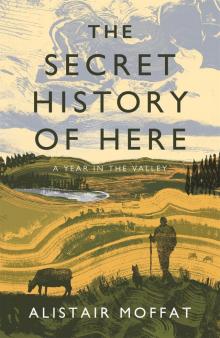 The Secret History of Here
The Secret History of Here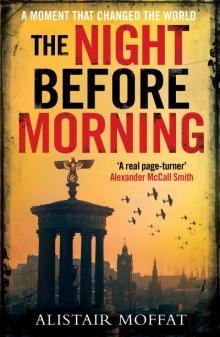 The Night Before Morning
The Night Before Morning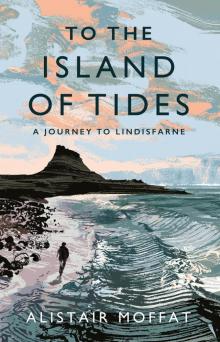 To the Island of Tides
To the Island of Tides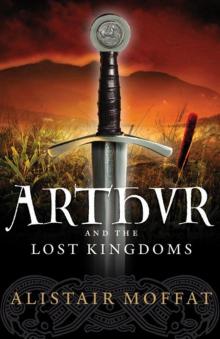 Arthur and the Lost Kingdoms
Arthur and the Lost Kingdoms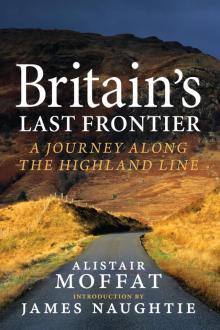 Britain’s Last Frontier
Britain’s Last Frontier The Faded Map: The Lost Kingdoms of Scotland
The Faded Map: The Lost Kingdoms of Scotland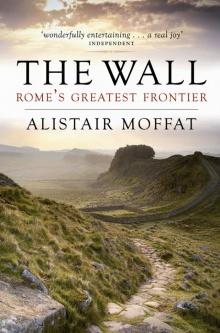 The Wall
The Wall